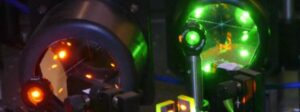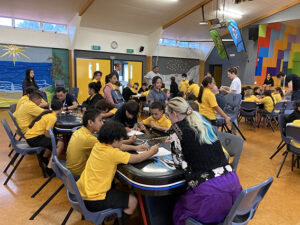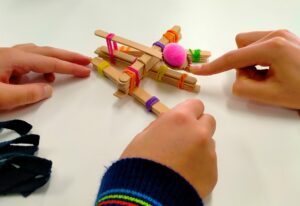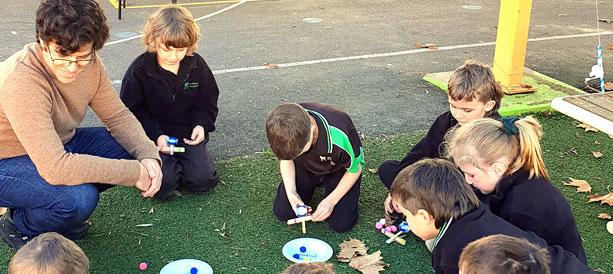
FLEET’s latest Forces and Energy teacher resource examines energy from the physics of Newton to Einstein, to the wavy behaviour of sub-atomic particles such as electrons.
Learning about ‘wavy’ stuff you can’t see, smell, taste or touch can test students’ intuitive understanding of the world.
FLEET’s latest Forces and Energy teacher resource examines energy from the physics of Newton to Einstein, to the wavy behaviour of sub-atomic particles such as electrons.
Students learn how energy is crucial to our understanding of how everything in the universe works – from sub-atomic particles to the sun, galaxies, their mobile phones, and the universe itself.
Students also critically examine that science. They are encouraged to use reasoning, constructing logical arguments about acceptable ways for society to use this scientific knowledge.
For example, how should society use energy, and what technologies are employed in this process?

Students are encouraged to consider global issues such as energy consumption in ICT
Or, how might this science affect global issues, such as achieving sustainable energy consumption, and what are acceptable means to achieve that objective?
In addition, students are encouraged to consider the value of FLEET’s research in this context and what role should it, or could it, play.
Based on the theory that primary students can and should (we think), learn quantum physics, the quantum energy component gets students to examine the wave function of the electron and do a classroom version of a recent million-dollar experiment that showed for the first time, how the energy in a photon affects the mass of an atom.
In the process students learn how atomic clocks can help unravel the big mysteries of our universe. This component of the resource is based on research conducted by the Einstein First project at the University of Western Australia, which teaches the fundamental concepts of modern physics to school students and works to improve STEM involvement in the classroom.
Back in the classical world, students examine the relationship between energy and work, and calculate how far they have to push a box to burn off the energy in a standard chocolate bar compared to an apple. (Hint, it is a long way.)

Catapults are a popular way for students to learn about transfer of energy
Catapults are a favourite classical physics activity, with students applying their understanding of potential and kinetic energy to modify and improve the projectile-flinging ability of a simple catapult. All you need is icy pole sticks and rubber bands and somewhere away from glass windows (although soft-foam or marshmallow projectiles also work, and save your windows!)
The resource, found on the FLEET Schools web page, is targeted at years 4-9 and is linked to the Victorian and Australian curriculum. Other FLEET School teacher resources include Light: Reflection, refraction, diffraction, and Electricity conductors and insulators.
Read more
- FLEET Schools FLEET.org.au/schools
- Forces and energy
- Einstein First einsteinianphysics.com

